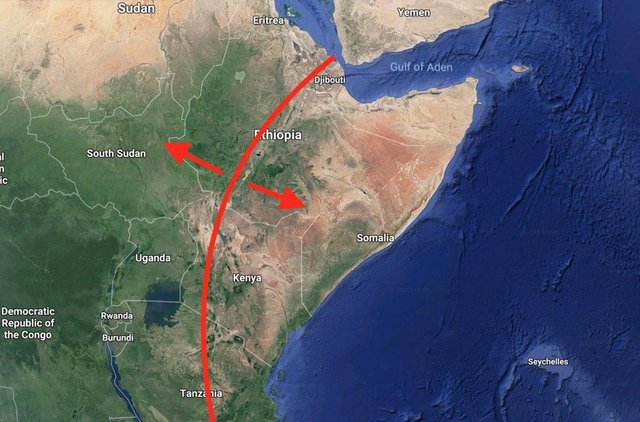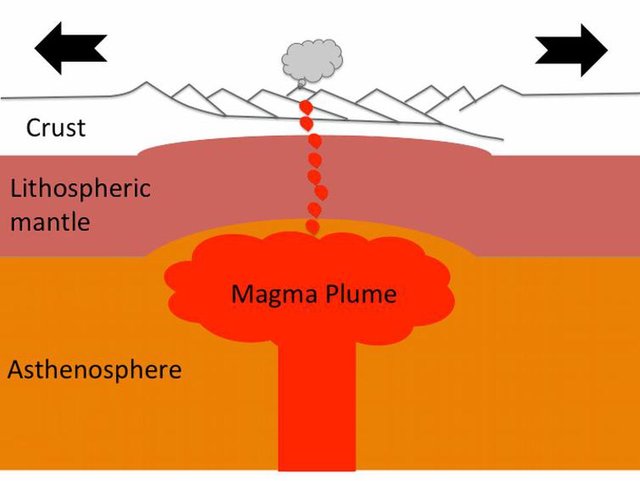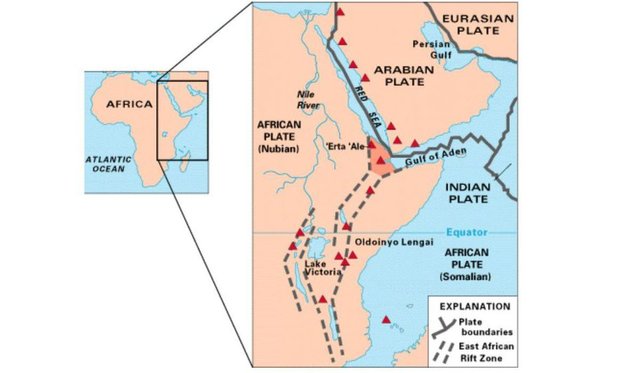An Enormous Crack Just Opened Up In Africa, Evidence Africa Is Literally Splitting In Two

Approximate location of the East African Rift running along the eastern
A massive crack suddenly appeared in Kenya, prompting new discussion on the breakup of Africa into two land masses. The crack continues to grow in size as heavy rainfall in Kenya's Narok County exacerbates the kilometer-sized chasm.
The sudden appearance of the crack is related to a regional zone of weakness and broadly associated with the continued breakup of the African continent. The leading hypothesis behind the breakup of the African continent is caused by an underlying superheated plume. This plume is causing Africa to split in two along the eastern edge of the continent. Thankfully, the rifting process will take many millions of years as the crust begins to thin and sink and a small seaway begins to intrude the rift zone.
Splitting a continent in two is quite common, for instance, it led to the opening of the Atlantic Ocean. Notice how Africa and South America would fit perfectly together, this is because they were once one landmass, eventually sutured apart by the Mid-Atlantic Ridge. While scientists have known for quite some time about the rifting in Africa, the underlying cause has been hard to pin down. Evidence suggests it is due to a superplume upwelling along the eastern edge of Africa, figuratively "burning" a hole in Earth's crust.

Schematic of a mantle plume similar to the one seen in the East African Rift system.
This superplume created the East African Rift System (EARS), the system associated with the breakup of the African continent. The East African Rift Valley, produced as a result of the ongoing splitting of the African continent, stretches more than 3,000 km from the Gulf of Aden to Zimbabwe. The rifting, which began about 25 million years ago, will eventually create two separate continental masses associated with the Somalian and Nubian tectonic plates. The process, however, will take millions of years at the current spreading rate of a few millimeters per year.

Diagram of the East African rift system.
While the larger rifting system could be the underlying mechanism for the 50 feet deep and 66 feet wide chasm, the sudden appearance was likely due to heavy rainfall in the area, exposing the crack. The surface expression of the rifting is responsible for a wide zone of volcanism, seismic activity, uplift and subsidence of the ground, and the creation of fissures and cracks.
Over millions of years, the eastern edge of Africa will begin to be separated from the rest of Africa by a small and shallow sea. As rifting continues, Earth will exhibit a large island in the Indian Ocean. This island will likely consist of parts of Ethiopia, Somalia, Kenya, and Tanzania.
Trevor Nace is a PhD geologist, founder of Science Trends, Follow his journey @trevornace.